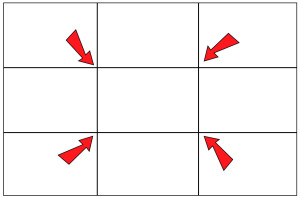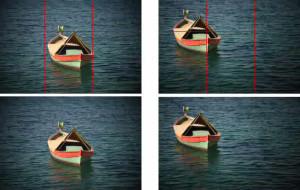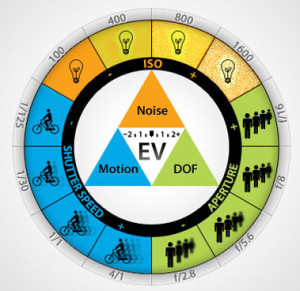Photography Tips Anyone Can Use By Ali Harris
One of the things I learned in my first photography class is that "The best camera is the one that's with you".
It's no secret that today almost everyone has a camera of some kind on them at any given time. This speaks volumes to how our society and its interaction with photography has changed over time in its value, purpose and process. What used to be an incredibly lengthy and confusing process, has now become available to everyone!
I recently had the pleasure of speaking with three commercial photographers who we have worked with for food, event or portrait photography:
Ali Rahimi - Vancouver/Montreal
Charles Zuckermann – Vancouver
Phillp Chin - Vancouver/Toronto
These three have more than 60 years experience combined, compared to my five, so I am happy to incorporate their tips and tricks and work them in with my own.
Please find the follow advice on how to take photos like a pro - from any device.
Go to the Light
Stay away from having bright backdrops, especially windows in the back of photos – instead use this light to your advantage and turn your subject to face the brightness and let it illuminate your photos!
Think in Threes
The Rule of Thirds, also known as the Golden Ratio, is a guideline for composing your photos. It involves dividing the image into 9 equal sections and placing your subject where the lines intersect. Putting your subject in the middle is a no-no, as this will create a static photo. The idea was developed by renaissance painters who found that the eye doesn't rest at the centre of the photo... instead, it wants to wander. Of course, there are times when it's appropriate to break the rule, but always have it in mind.
Exposure, Aperture and Shutter Speed
Exposure indicates light sensitivity. A high ISO (International Standards Organization - referring to the industry norm for light sensitivity) allows you to take photos in low light. However, if the ISO is too high, the photo will appear grainy.
Aperture is the size of the physical opening of the lens and determines the focal length or depth-of-field. The higher the number, the a smaller hole letting light in, which I know, is a bit confusing. A low aperture means a larger hole letting light in which will lead to the background being out of focus.
Shutter Speed is how long the lens remains open for. A long shutter speed will show motion in the photo, and may lead to a blurry photo. A short shutter speed is best, to capture a sharp image.
Presentations and Presenters
Do you need to capture someone giving a speech, giving a cheque presentation, or receiving an award? Use a medium to shallow depth-of-field (Aperture) to make the cheque and/or presenters 'pop'. This means that only the people and cheque will be sharp and the background will be blurry. You can change the depth-of-field by lowering the aperture on your camera.
Avoid shooting from below people. To get the most flattering angle, have your camera at eye level or higher!
Large Group Photos
- Do you need to take a photo of your hockey team or staff? Align your subjects largest in the centre and smallest on the outside and have even numbers on either side.
- Be as close to the crowd as you can without cutting off their heads - you want to see their faces as much as possible.
- Take quite a few shots – have lots of countdowns to avoid people blinking
- Break the ice by making a joke!
Phone Photos
- Take your picture a little further back than you would like to give yourself room to crop it.
- Download an editing program or use the one that comes with your phone.
- Tilt your phone/camera a little. This gives a much more playful vibe.
What to do if the room is dark
- Use a high ISO to increase the speed that your camera takes the photo.
- Use the built in flash on your camera or smartphone and if your camera doesn't have one, use your smartphone's flashlight as a flash, by holding your camera with one hand, and the smartphone in the other.
What has a better chance for publication? Horizontal or vertical photos?
Most print and online publications request Landscape (Horizontal) shots, but periodicals/magazines often use Portrait (Vertical) shots. Most photographers submit both.
When in doubt, hire a pro! Care to share your favourite photography tips and tricks? Leave them in the comments below!




